
August 11-14, 2013 • Little Rock Marriott • Little Rock, Arkansas
Area highlights include:
• William J. Clinton Presidential Library
• Clinton School of Public Service
• Arkansas Arts Center
• Mosiac Templars Cultural Center
• Museum of Discovery
• River Market District
• Arkansas Repertory Theater
• Little Rock Central High School National Historic Site
• Statehouse Convention Center
• Arkansas Governor’s Mansion
THEME: The Times They Are A-Changin’
This important center of the civil rights movement will set the stage for our conference theme. In one of the many relevant and interesting conference sessions, we’ll visit historic Central High School (pictured on this flyer with the “Little Rock 9”) and hear about the courts’ pivotal role in advancing civil rights in the United States.
The conference hotel is the Little Rock Marriott (formerly the Peabody Hotel)
The deadline to reserve your hotel lodging at the group rate is July 26, 2013. Please make sure to confirm the conference lodging rate of $129.00 per night.
The Little Rock Marriott provides complimentary shuttle service to and from the airport.
2013 NASJE Annual Conference Update – The Times They Are A‐Changin’: The Role of Adult Development in the Learning Process
Hello fellow NASJE members! Our first update from the 2013 Annual Conference in Little Rock come courtesy of Michael Roosevelt. The photos below are from the First Plenary today (Monday, August 12th) — The Times They Are A‐Changin’: The Role of Adult Development in the Learning Process.
2013 NASJE Annual Conference Update – Plenary Session at the Little Rock Central High School National Historical Site
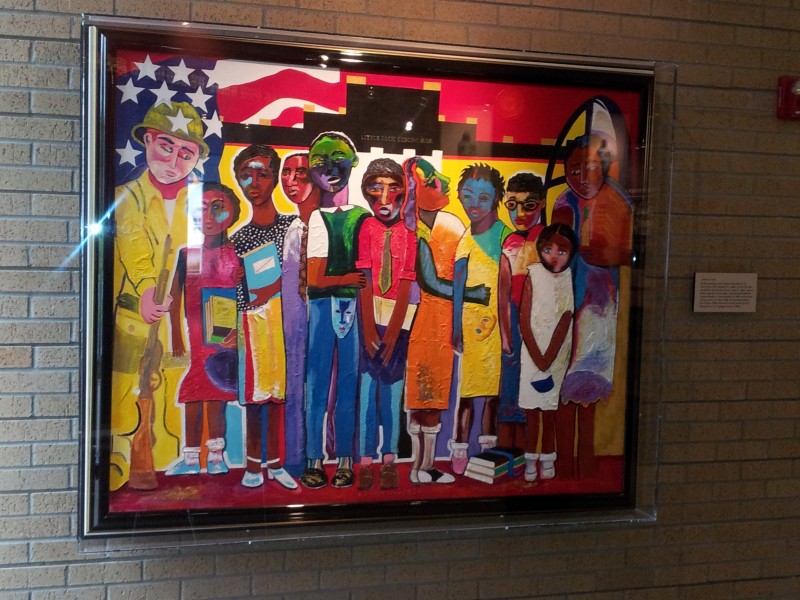
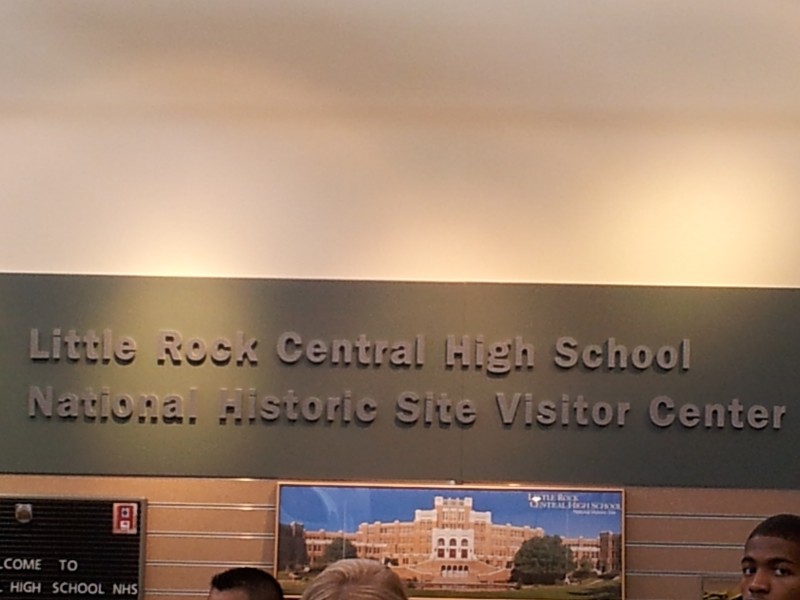
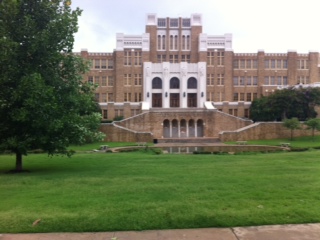
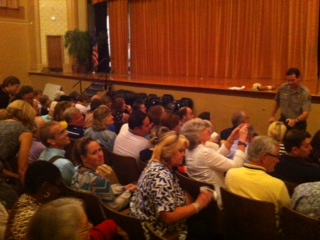
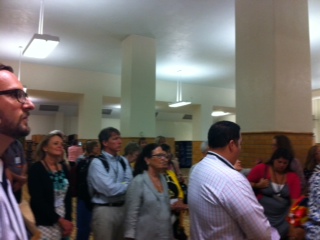
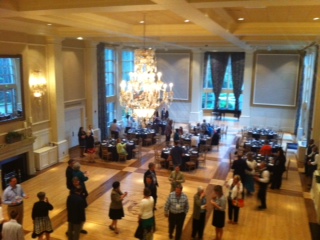
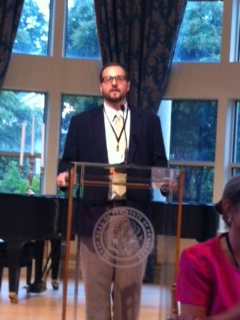

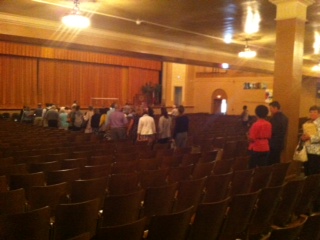
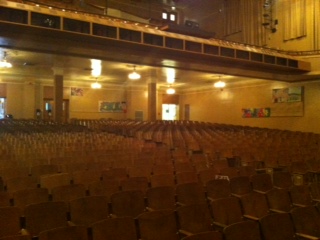
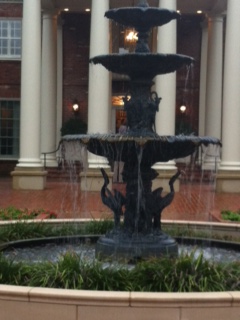
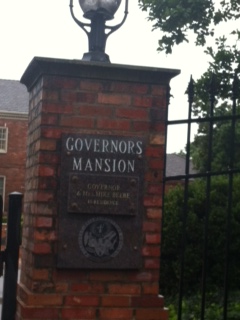




Little Rock Central High School—A Lesson in Little Rock History
By Jasmine Medley, Judicial Education Specialist, Arkansas Administrative Office of the Courts
Little Rock, a city with a rich history, has seen periods of intense strife. These events have made it one of the most historically and culturally significant cities in American history. From its beginnings as a stop on Hernando de Soto’s exploration to the present day, various events have dotted the city’s growth and development culturally, economically and socially. One of the most well-documented and oft-cited events was the desegregation of Little Rock Central High School (Central).
The building that houses Central High was erected in 1927, and was touted as the most beautiful high school in America. Constructed on a $1.5 million budget, the school was the most expensive for its time (www.centralhigh57.org). At that time, the school was the premier white high school in the city of Little Rock and was called Little Rock High School. The name was changed to Little Rock Central High School in 1955 when Hall High School was opened in what was then West Little Rock.
In 1956, the Little Rock School Board decided that it would begin to desegregate its public schools to comply with the Brown v. Board of Education decision from 1954 (www.encyclopediaofarkansas.net). The process of integrating Central was a long and tedious one. One of the first steps in this endeavor was to select the African American students who would ultimately go into the halls of Central. Students were taken through a battery of interviews and tests that looked at their aptitude and level of achievement during their secondary school careers.
The group of students who were selected to enter Central went from a few dozen down to 17 (www.centralhigh57.org). The Little Rock branch of the National Association for the Advancement of Colored People (NAACP) served as a cornerstone for the students who were selected to go into Central. The chief mentor was Daisy Bates, the Little Rock NAACP’s president. She championed the cause of getting the African American students into the school. When the prospective Central students were told that they would not be allowed to participate in any extracurricular activities, like choir or jazz band or any sports or student clubs (several of the students participated in musical groups and sports teams at their former school Horace Mann High School, the African American high school), they dropped out of the group that would integrate. That stipulation dropped the group down to the final nine students, now known as the Little Rock Nine.
Those final nine students ranged from age 15 to 17: Minnijean Brown, Jefferson Thomas, Gloria Ray, Terrence Roberts, Carlotta Walls, Melba Pattillo, Elizabeth Eckford, Thelma Mothershed and Ernest Green (www.nps.gov). Notably, Thelma Mothershed almost dropped out of the group due to a heart ailment—her parents and those connected to the Little Rock Nine thought that the pressure and stress of entering the all-white Little Rock Central would be too much for her and cause her great harm. Nevertheless, Miss Mothershed and the other eight students stuck with it.
The Little Rock Nine were supposed to begin classes with the rest of the Central High student body on September 4, 1957, but their plan was brought to a screeching halt by mobs surrounding the school building. Not only did the Little Rock Nine have to deal with the mobs, but also with the support that then governor, Orval Faubus, gave to the segregationists. The same day that the Little Rock Nine were supposed to enter the school, Governor Faubus dispatched the Arkansas National Guard to help with the mob’s attempts to keep the students out of the school (www.encyclopediaofarkansas.net). One of the students, Elizabeth Eckford, did not have a telephone in her home and did not get the word that they would meet and arrive at the school as a group and that the group had been turned away. Miss Eckford walked from her home to Central by herself and endured the screaming, spitting, cruel mob at her heels (www.encyclopediaorarkansas.net). One kind white bystander came to Miss Eckford’s rescue, got her on a city bus, and rode home with her.
The students, led by Daisy Bates, tried each school day to get in, but each time, they were unsuccessful. It was not until September 25, 1957, that the students were finally let into the school. This small victory came only because President Dwight D. Eisenhower overrode Governor Faubus’ actions with the Arkansas National Guard and called up the 101st Airborne Division of the United States Army. President Eisenhower not only brought in the Army troops, but he federalized all 10,000 of the Arkansas National Guard members, taking them out of the control of the governor. The Little Rock Nine finally got into Little Rock Central High School (www.encyclopediaofarkansas.net).
School days for the Little Rock Nine were challenging at best. Each of the Nine was assigned a soldier from the United States Army and later the Arkansas National Guard, but the days were still long and tough. It is likely that each of the nine students was tormented and harassed by their white peers. Students shoved members of the Nine down stairs, spat on them, and hit them, and one student even poured acid onto Melba Pattillo’s face and eyes.
After several previous incidents with students in the cafeteria, Minnijean Brown was expelled from Central after she poured chili onto a group of white male students (www.nps.gov). Miss Brown moved to New York City with family friends where she finished high school at New Lincoln High. The remaining eight students finished out the school year at Central.
In May 1958, Ernest Green became the first African American graduate of Little Rock Central High School (www.nps.gov). The ceremony was held in Earl Quigley Stadium, directly west of the school building, and Dr. Martin Luther King, Jr. attended (www.centralhigh57.org).
After the turbulent year at Central, Governor Faubus tried once more to go around the high court’s decision to integrate the schools. Faubus believed that the city of Little Rock had a right to oppose the court’s decision, so he signed an act that allowed him and the Little Rock School District to close the schools. With the closure of schools, neither African American nor white students would be able to attend school. City residents could oppose the governor’s signed acts in a referendum, but in a speech, Faubus persuaded voters to uphold his new legislation to close the public schools. In that speech, Faubus outlined his plan to lease public school buildings to private schools so that students would remain segregated (www.encyclopediaofarkansas.net). Voters sided with Faubus and the 1958-1959 school year is now called the “Lost Year” because all public schools in the city were closed (Central High School National Historic Site).
Several of the Nine moved to other towns with relatives to finish their high school careers. Like many African American students during that year, Thelma Mothershed finished her high school education and received her high school diploma from Central through correspondence.
William Jefferson Clinton Presidential Center and the Clinton School of Public Service
By Jasmine Medley, Judicial Education Specialist, Arkansas Administrative Office of the Courts
Little Rock is well known for many notable events, places, things to do and even people. On August 19, 1946, in Hope, Arkansas, a man who would grow up one day to be become the forty-second president of the United States of America was born. William Jefferson Clinton grew up in Hot Springs, Arkansas, and went on to study at the Walsh School of Foreign Service at Georgetown University in Washington, D.C. Clinton graduated from Georgetown with a Bachelor of Science Degree in Foreign Service. After graduation, Clinton received the distinction of being a Rhodes Scholar and was able to study at University College at Oxford University in the United Kingdom. After studying at Oxford, Clinton enrolled at the Yale University School of Law and earned a juris doctor in 1973.
Clinton’s political career began early. He was a part of Vietnam War protesting in college, he worked for Arkansas senator William Fulbright, for whom Fulbright Scholarships are named, and he worked in the office of Dallas, Texas, mayor Ron Kirk. Clinton also worked on George McGovern’s 1972 presidential campaign. In 1975, Clinton returned to Arkansas to become a law professor at the University of Arkansas School of Law. By this time, Clinton had met and only recently married an Illinois native Hillary Rodham. In 1974, Clinton was defeated in a House of Representatives election by the incumbent and two years after that Bill Clinton was elected the attorney general of Arkansas. In 1978, at age 32, Clinton became one of the youngest governors in history (www.biography.com).
When it came to re-election, then-Governor Clinton lost the race to Frank White. This was likely due to political inexperience and youth. After Governor White’s one term, Governor Clinton was re-elected for another four consecutive terms (www.biography.com). As governor of Arkansas, Clinton showed his status as a rising star in politics. He led the state as a centrist governor and appealed to the needs and wants of both ends of the spectrum. There were some tax and fee increases as well as a push for affirmative action in Arkansas. He also served as the chairman of the National Governors’ Association.
In 1992, the young governor was not thought to be a front-runner for the United States presidency, but the nation was surprised when Governor Clinton became President Clinton. President Clinton’s administration is marked by the signing of the Oslo Accords between Israel and Palestine, the ratification of the Family and Medical Leave Act, and even some notably less positive events like the humanitarian failure in Somalia and the domestic scandals the President faced.
Even with the blemishes on his presidency, Bill Clinton made a name for himself as an esteemed humanitarian and world leader. The William J. Clinton Foundation was formed in 2003 to see that those in need around the world could be helped and that charitable action could be taken for those who needed it. At the end of President Clinton’s second term as president, he decided that he wanted to make a “measurable difference” in areas he cared about (www.clintonfoundation.org).
In 2004, the William Jefferson Clinton Presidential Center and Park opened to the public in an area of downtown Little Rock that was previously littered with old and unused warehouses. In the library, there are permanent exhibits that give highlights of President Clinton’s eight-year administration, gifts the Clinton family received from their many travels abroad, plus other exhibits that change throughout the year (www.clintonpresidentialcenter.org). In conjunction with the opening of the Clinton Presidential Center was the inauguration of the Clinton School of Public Service, part of the University of Arkansas education system. The school is the first of its kind and the only in the country to offer a Master of Public Service degree, modeled on President Clinton’s philosophy and work to grow humanitarian efforts around the world (www.clintonschool.uasys.edu).
Little Rock: A City Guide
By Meghan Sever, Communications Specialist, Arkansas Administrative Office of the Courts
If you find yourself in Little Rock, Arkansas – and if you are attending this year’s NASJE conference, you will – you’ll find a plethora of things to occupy your free time. Whether you prefer to spend your time perusing museums, shopping, spending time in the great outdoors or dancing the night away, you’re sure to find something that interests you in the heart of central Arkansas.
If you are looking to immerse yourself in the city’s arts and culture, rest assured Little Rock has many venues where you’ll find opportunities to explore all that Arkansas has to offer. The Arkansas Arts Center (www.arkarts.com) is the city’s prominent art museum. Here you’ll find a permanent collection, featured exhibitions, art and dance classes, lectures, and a research library.
The Arts Center also produces a children’s theatre, the only professional company in the state to bring children’s literary works to the stage. Admission to the Arts Center is free, with the exception of special exhibits. Crystal Bridges Museum of American Art (www.crystalbridges.org) is located in Bentonville, Arkansas – just a three-hour car ride from Little Rock. Founded in 2005, Crystal Bridges features a permanent collection of American works dating from the Colonial era to present day.
The Arkansas Repertory Theatre (www.therep.org) is the Arkansas’s largest non-profit professional theatre. Each season, it produces theatrical works ranging from classical dramas to contemporary comedies. The Community Theatre of Little Rock
(www.ctlr-act.org), the city’s oldest theatre, is another non-profit theatre offering a variety of shows and musicals. Still another of Little Rock’s playhouses that make up Little Rock’s non-profit theatrical community is The Weekend Theater (www.weekendtheater.org). The Weekend Theater focuses on producing socially significant plays for the people of central Arkansas.
Spend an evening listening to great music, courtesy of the Arkansas Symphony Orchestra (www.arkansassymphony.org). Each season, the orchestra performs more than 30 concerts at Robinson Center Music Hall, located in the heart of downtown Little Rock. The orchestra tours the state multiple times a year, playing at Pops on the River, Little Rock’s Independence Day celebration, and other events. They also offer many educational programs including free concerts for children, quartet demonstrations, and Orchestra and You, a program designed to introduce children to instruments.
Little Rock has a unique brewery and distillery scene. Diamond Bear Brewery (www.diamondbear.com) is one of Little Rock’s local breweries. Tours of Diamond Bear are available on Saturday and Sunday at 3:00 p.m. Vino’s Brew Pub (www.vinosbrewpub.com) and Bosco’s (www.boscosbeer.com) also make their own brews. Rock Town Distillery (www.arkansaslightning.com) is the state’s only distillery. Tours are available weekdays at 4:00 p.m. and weekends at 1:30 p.m., and the tasting room is open Wednesday through Sunday, 1:00 – 5:00 p.m.
Arkansas is known as the Natural State, and as such, is a popular destination for biking, hiking, fishing, camping and boating. Little Rock is often referred to as a “city within a park”, and for good reason: there are over 50 parks located within the greater Little Rock metropolitan area. These parks provide citizens with running and biking trails, safe playgrounds and dog parks, prime fishing locations, and clean camping spots. Burns Park, War Memorial Park, Hindman Park, and Rebsamen Park have golf courses in addition to these other amenities.
Riverfront Park, in downtown Little Rock, is encompassed by the River Market District. It features a pedestrian bridge, sculpture garden, farmers’ market and Peabody Park – a playground containing tunnels, rocks, slides and a spray pad. Also located in Riverfront Park is la Petite Roche – a French phrase which translates to “the little rock” – the rock outcropping from which the city got its name. It is one of Arkansas’ most important landmarks.
The Arkansas River Trail System is the 34-mile loop that connects 38 parks, 6 museums, and over 5,000 acres of parkland. The trail runs along the Arkansas River on both the Little Rock and North Little Rock sides, connected by the Clinton Presidential Park Bridge and the Big Dam Bridge, the longest pedestrian and bicycle bridge in the world. There are several places to rent bicycles along the river trail, including Bobby’s Bike Hike Rentals in the River Market (www.bobbysbikehike.com/littlerock/) and Fike’s Bikes (www.fikesbikes.com). Segway rentals are also available at Segway of Arkansas (www.segwayofarkansas.com).
Arkansas’ minor league baseball team, the Arkansas Travelers (www.travs.com), play at Dickey-Stephens Park. The Travelers have games most Tuesday and Wednesday evenings during the summer. Tickets can be purchased on their website. The Travelers, created in 1901, are named after a famous minstrel who roamed the state, peddling wares and singing songs. Originally, they were the Little Rock Travelers but changed to incorporate the entire state in 1957, becoming the first professional sports franchise named for a state.
Arkansas is also the world headquarters of the American Taekwondo Association. The World Championships are held each summer in Little Rock. The H.U. Lee International Gate and Garden, located outside of the Statehouse Convention Center, is a tribute to Eternal Grandmaster H.U. Lee and is a salute to martial arts.
There are many family-friendly places in Little Rock. The Little Rock Zoo (www.littlerockzoo.com) is the state’s largest and only accredited zoo, and has over 700 animals. The Little Rock Zoo is one of the only zoos in the world to have an ape exhibit with all three species of great apes: chimpanzee, orangutan, and gorilla.
Pinnacle Mountain State Park is located just outside the city limits. It features a peak more than 1,000 feet above the river valley, with two different trails to the top. Visitors can also enjoy canoeing, kayaking, picnicking, horseback riding and a visitor’s center with exhibits. The Old Mill, located in North Little Rock, is an historic re-creation of a traditional water-powered grist mill. Built in 1933, it is on the National Register of Historic Places. More than 100,000 visitors come every year to the Old Mill, famous for its part in the opening scenes of Gone with the Wind.
If you want to spend your time steeping in Arkansas’ rich history, look no further than the many different museums and exhibits located within the capital city. Most have free admission and offer a peek into Arkansas’ history and the lives of its people. The Governor’s Mansion (www.arkansasgovernorsmansion.com) is the official residence of the governor of the state of Arkansas. This Georgian Colonial, home to Governor Mike Beebe and First Lady Ginger Beebe, is open to the public for tours Tuesday mornings and Thursday afternoons by appointment only.
Little Rock Central High School is located just a few blocks away and is most famous as the site of the 1957 desegregation of public schools in Arkansas. This event is commonly referred to as the crisis at Little Rock Central High School. In addition to the school itself, which is the only functioning high school to be located within the boundaries of a National Historic Site, there is a visitor’s center across the street. The visitor’s center features interactive exhibits, tours, and a gift shop.
The Arkansas State Capitol (www.sos.arkansas.gov), located downtown, is the hub of Arkansas’s government. Built in 1915, this neo-classical structure is primarily made up of marble and limestone. The cupola is covered in gold leaf. The building houses the offices of the governor, secretary of state, and attorney general. Both the Arkansas Senate and House of Representatives meet here as well. The grounds feature a variety of plants, trees, and monuments. Highlights include many native Arkansas trees, rose gardens, iris gardens and a monument dedicated to the nine African-American students who integrated Little Rock Central entitled Testament: The Little Rock Nine Monument. Tours of the grounds and the capitol building are given weekdays; admission is free.
If you want to learn more about Arkansas’ history, the Historic Arkansas Museum (www.historicarkansas.org) offers six galleries of Arkansas’s cultural artifacts and four dwellings original to the city. These structures are the oldest houses in Little Rock today. Here you can take a guided tour and watch actors, dressed in period costumes, portray early Arkansans. The Old State House Museum (www.oldstatehouse.com) is the oldest standing state capitol west of the Mississippi. This building served as the capitol until 1911, at which time it was restored and reopened as a museum. The Old State House offers tours and exhibits on Arkansas history.
The Arkansas Studies Institute, which is located in the Butler Center for Arkansas Studies (www.butlercenter.org), is the state’s largest free-standing facility dedicated to the study of Arkansas. As part of the Central Arkansas Library System (CALS), the Arkansas Studies Institute offers the state’s largest collection of Arkansas historical and genealogical documents. More than 10 million documents and photographs on Arkansas history are available for public use. The center also has art galleries featuring local artists and sponsors a local music festival, Arkansas Sounds.
Take a walk through the Quapaw Quarter, one of the oldest neighborhoods in Little Rock, on your way down to see the William J. Clinton Presidential Center (www.clintonpresidentialcenter.org) and Park. The library chronicles the history of the Clinton Administration and features a full-scale replica of the Oval Office and the White House Cabinet Room. Other permanent exhibits include the campaign, inauguration, life in the White House and Clinton’s present-day work with the Clinton Foundation. On the grounds of the library are the William E. “Bill” Clark Presidential Wetlands. This 3,000-acre outdoor space showcases area wildlife in a restored habitat. Also on the library grounds is the Clinton School of Public Service, the first and only school in the nation to offer a Master of Public Service (MPS) degree.
Little Rock offers many opportunities to learn about the state’s military history as well as to pay tribute to those who have served. The MacArthur Museum of Arkansas Military History (www.arkmilitaryheritage.com) is named for General Douglas MacArthur, a U.S. Army general and native Arkansan, and features exhibits of artifacts, photographs, uniforms and other historically significant items. The Korean War Memorial, one of the most impressive in the country, is unique in that it was paid for almost entirely by the Republic of Korea to honor the veterans who fought and died for their freedom. The memorial is composed of granite panels, listing the names of the 461 Arkansans who lost their lives, and statues of combat soldiers and Korean children.
The Vietnam Veterans Memorial, located on the grounds of the state capitol, is dedicated to those who served in the Vietnam War and is inscribed with the names of the Arkansas soldiers who lost their lives during service. The Arkansas Inland Maritime Museum (www.aimm.museum) educates visitors on the impact of maritime trade, inland waterways and life on the Arkansas River. The main exhibit is the submarine USS Razorback, a veteran of World War II, the Vietnam War, and the Cold War. Tours of the submarine are available from 10:00 a.m. to 6:00 p.m. daily.
Other area highlights include Heifer International (www.heifer.org), the Museum of Discovery (www.museumofdiscovery.org), and the Witt Stephens Jr. Central Arkansas Nature Center (www.centralarkansasnaturecenter.com). Make time to visit Heifer International’s headquarters located in Arkansas’ capital city. Heifer International is a non-profit organization dedicated to ending world hunger and caring for the environment by providing livestock and training to struggling people around the world. Heifer Village, on the Heifer International campus, is an interactive education facility where visitors can learn about solutions to global hunger and poverty in a memorable way.
The Museum of Discovery, founded in 1927, is the oldest museum in Little Rock. This museum, newly remodeled in 2012 with over 85 new exhibits, offers an interactive learning environment for all ages including exhibits on nanotechnology, illusions, fossils and astronomy. This summer, a special exhibit entitled “How People Make Things” will be at the museum. This exhibit allows visitors to experience how familiar objects are made and includes hands-on activities, factory tours and live demonstrations. Near the Museum of Discovery, you’ll find the Witt Stephens Jr. Central Arkansas Nature Center. Exhibits highlight the role of fish and wildlife management in Arkansas. Activities include fish and alligator feeding, geocaching, and nature stories. Visitors can observe native fish, bugs and plants in the aquarium.
There are many opportunities to get some shopping in as well. The River Market offers a unique shopping experience with the Clinton Museum Store (www.clintonmuseumstore.com) and other local boutiques. There are also many other shopping destinations located throughout the city. In Midtown, stop by the Midtowne Shopping Center (www.midtownelittlerock.com), the Park Avenue Shopping Center (www.parkavenuelr.com), and the Park Plaza Mall (www.parkplazamall.com). In West Little Rock, don’t miss the Pleasant Ridge Shopping Center (www.schickels.com) and the Promenade at Chenal (www.chenalshopping.com).
There is just as much to do in Little Rock once the sun goes down. Catch live jazz each night at the Afterthought (www.afterthoughtbar.com). Juanita’s (www.juanitas.com), Sticky Fingerz and the Rev Room (www.revroom.com) also provide excellent opportunities for live music and good food. Visit Ernie Biggs (www.erniebiggs.com) and Willy D’s (www.willydspianobar.com), both located in the River Market, for some dueling piano fun. Share some laughs at the Looney Bin Comedy Club (www.looneybincomedy.com) or meet up with friends for pizza and a good beer – Vino’s Brew Pub has some of the city’s best. Hang out on the deck at Cajun’s Wharf (www.cajunswharf.com). Overlooking the Arkansas River, it’s a local favorite for fresh seafood.
With a strong foundation in the past, the city feels alive with the energy of its unique citizens. Forget what you thought about Little Rock; it is a city in the midst of transition. It is growing and expanding at an alarming rate. There are more opportunities to explore its culture than ever before. If it’s been a while since you last spent some time in the city within a park, come reacquaint yourself with her. If you’ve never been, you’re missing out. Come enjoy the beauty, hospitality and individuality of this southern gem. But I’ll warn you now: August is hot.
